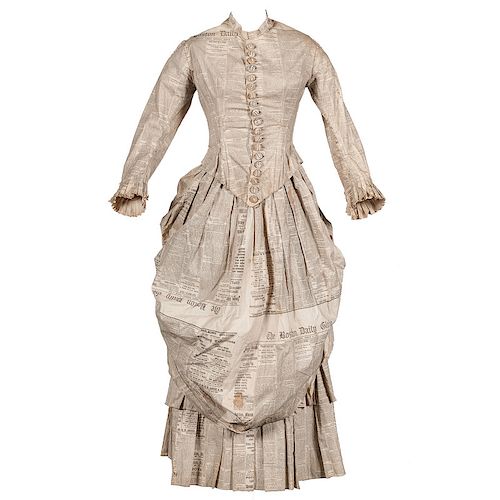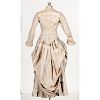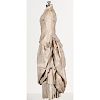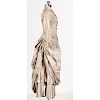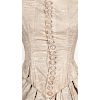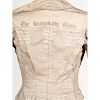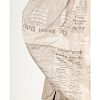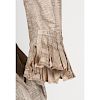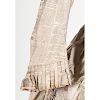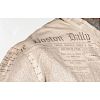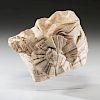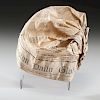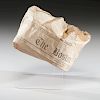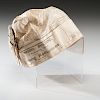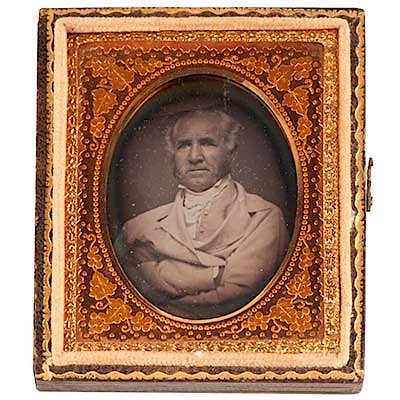Exceptionally Rare Boston Daily Globe 1883 "Conversation Dress"
About Seller
6270 Este Ave.
Cincinnati , OH 45232
United States
With offices in Cincinnati, Cleveland and Denver, Cowan’s holds over 40 auctions each year, with annual sales exceeding $16M. We reach buyers around the globe, and take pride in our reputation for integrity, customer service and great results. A full-service house, Cowan’s Auctions specializes in Am...Read more
Two ways to bid:
- Leave a max absentee bid and the platform will bid on your behalf up to your maximum bid during the live auction.
- Bid live during the auction and your bids will be submitted real-time to the auctioneer.
Bid Increments
| Price | Bid Increment |
|---|---|
| $0 | $25 |
| $500 | $50 |
| $1,000 | $100 |
| $2,000 | $250 |
| $5,000 | $500 |
| $10,000 | $1,000 |
| $20,000 | $2,500 |
| $50,000 | $5,000 |
| $100,000 | $10,000 |
About Auction
Nov 16, 2018
Cowan’s Fall American History: Premier Auction features over 200 lots including early photographs, documents, manuscripts, broadsides, flags, and more dating from the Revolutionary War period to the mid-20th Century, many representing important landmark moments in American history. Cowan's Auctions dawnie@cowans.com
- Lot Description
Three-piece dress and hat constructed of fabric printed with the March 9, 1883 issue of the Boston Daily Globe. This unusual gown features an underskirt trimmed with vertical pleats, as well as a shorter, voluminous overskirt meant to be layered on top, finished with elegant draping and ruching at the sides. Completed by a three-quarter sleeve bodice with pleated cuffs and buttons down the front, which spell out "Boston Daily Globe." Brimless, close-fitting, cap-style hat, gathered at crown with large rosette affixed.
Print media and fashion have collided at several points in time, perhaps most recognizably as the daring, throwaway paper dresses of the 1960s. As early as the 1890s, however, when crepe paper was first commercially marketed, it was common for women to use paper in their costumes for themed balls. The 1895 edition of Ardern Holt's Fancy Dresses Described; or What to Wear to a Fancy Dress Ball suggests the theme of a wastepaper basket, featuring a dress accented at the hems, sleeves, and bodice with crumpled pieces of paper.
The permanent collection of the Kansas Historical Society features a closer example, made of newspaper-printed muslin by Minnie Biglin in 1902. Biglin created the dress for a costume ball held in Dwight, KS that April, which she attended as "Miss Newspaper" with her brother, Earl, who dressed in a devil costume as the "Printer's Devil," a slang term for an apprentice in a printing office. Biglin worked for the local paper, The Alta Vista Journal, and persuaded her editor to print several yards of muslin with the front page of the March 28 issue, suggesting that the costume was quickly assembled in time for the event on April 1. Another example, modeled with a matching hat and handbag, appears in a photograph, ca 1920s, from the Nathaniel Dewell Collection of History Nebraska. An unidentified woman with bobbed hair wears a dress made from pages of the Omaha World-Herald from June 1928.
Though we were unable to date our newspaper "conversation dress," stylistically it seems to reference fashions of the late 1880s. The stitching appears even and tight in most areas, particularly around the button holes and hem of the skirts. This careful attention, coupled with the intricate aesthetic details, suggests that it was made to be slightly more durable than the one-off example of Minnie Biglin's dress, though its function remains unknown. The Vanderbilts held a fancy dress ball in New York on March 26, 1883, and while elaborate costumes of this nature would certainly have been expected for the event, no evidence indicates that this dress was worn there.
Some areas of brown staining. All buttons present.Condition
- Shipping Info
-
Buyers are required to pay for all packing, shipping and insurance charges. Overseas duty charges are the responsibility of the successful Bidder. Be aware that for larger and/or valuable items, shipping charges can be substantial. - If there is no shipping amount on listed your invoice, you will need to make arrangements to pick up or ship your purchase through an alternative shipping company. Our shipping department can be contacted at 513.871.1670 (ext. 219) or email shipping@cowans.com. - Shipping charges include insurance for your order while in transit. If you have private insurance we will adjust your charge to include only packing and shipping. - Please allow 14 – 21 days after payment to package and ship your purchase as carefully as possible.
-
- Buyer's Premium



 EUR
EUR CAD
CAD AUD
AUD GBP
GBP MXN
MXN HKD
HKD CNY
CNY MYR
MYR SEK
SEK SGD
SGD CHF
CHF THB
THB